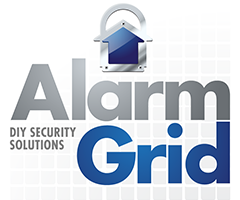Encrypted Glass Break Detectors
Encrypted glass break detectors make for a great addition to wireless systems that support encrypted sensors. When encrypted sensors are concerned, you want to be very sure that the system supports the wireless frequency you are working with. Encrypted sensors are often designed to work with a very select range of alarm systems, and sometimes they are only compatible with a single panel type. And many wireless systems don't have any encrypted sensor options. Some of the panels that have a lineup of encrypted wireless sensors, including encrypted glass break sensors, are the Resideo Lyric Alarm Panel, the Qolsys IQ Panel 2 Plus, the DSC PowerSeries NEO Panels, and the 2GIG GC2e and GC3e Systems.
The advantage to using encryption is that it makes your sensors more difficult to attack or take over wirelessly. With non-encrypted sensors, the devices are often prone to a technique called RF jamming. This effectively stops the signal from reaching the alarm control panel. This can often be accomplished with cheap and readily available equipment, and it can really stop an alarm system from working correctly. But you will not have to worry about this when you use encrypted wireless glass break detectors. These devices send signals across multiple channels, making the immune to RF jamming attacks. This is great for achieving proper peace of mind in knowing that your alarm system will always work correctly.
Encrypted glass break detectors work much like any other glass break detector in terms of pure operation. These devices have built-in microphones, and they actively listen for glass break events. They are great for monitoring windows, protective glass casings, pieces of glass artwork, trophy cases, and more. You need to make sure that the integrated microphone for your glass break detector will work with the type of glass that you want to monitor. Make sure to read the instruction manual and the specifications for the glass break sensor to find out if it can perform the way that you would like. There are many types of glass out there, and you must make sure your glass break sensor will work.
Encrypted glass break sensors often require a dual-detection method that is designed to prevent false alarms. The microphone must pick up both the low-pitched "thud" of an object striking against the glass, and the high-pitched "shattering" of the glass breaking. This helps prevent similar sounds from triggering a false alarm. Most glass break sensors have a certain range or area of which they can cover. Any glass that you are monitoring must be within this area. You may be able to have your glass break sensor monitor multiple windows by placing it in a key location. Remember to test your glass break detector using a glass break simulator after installation to make sure that it works properly.





